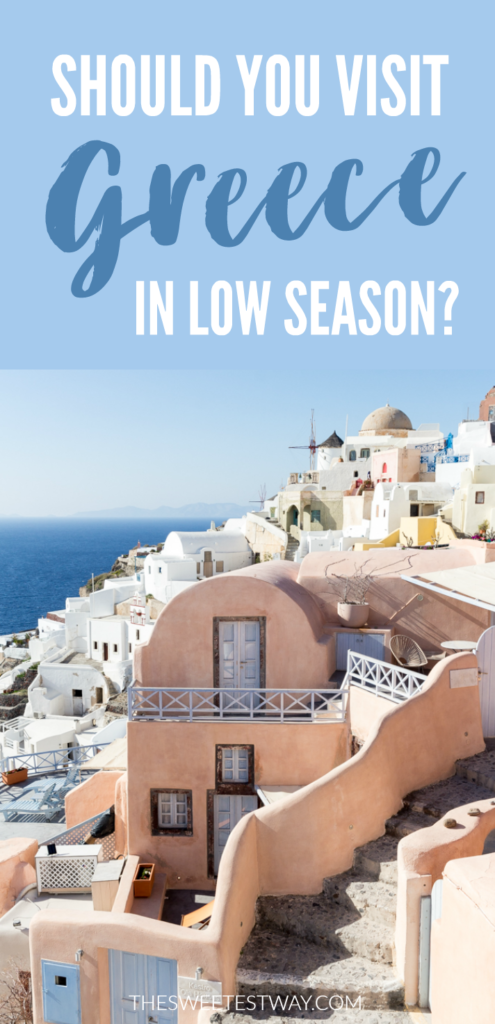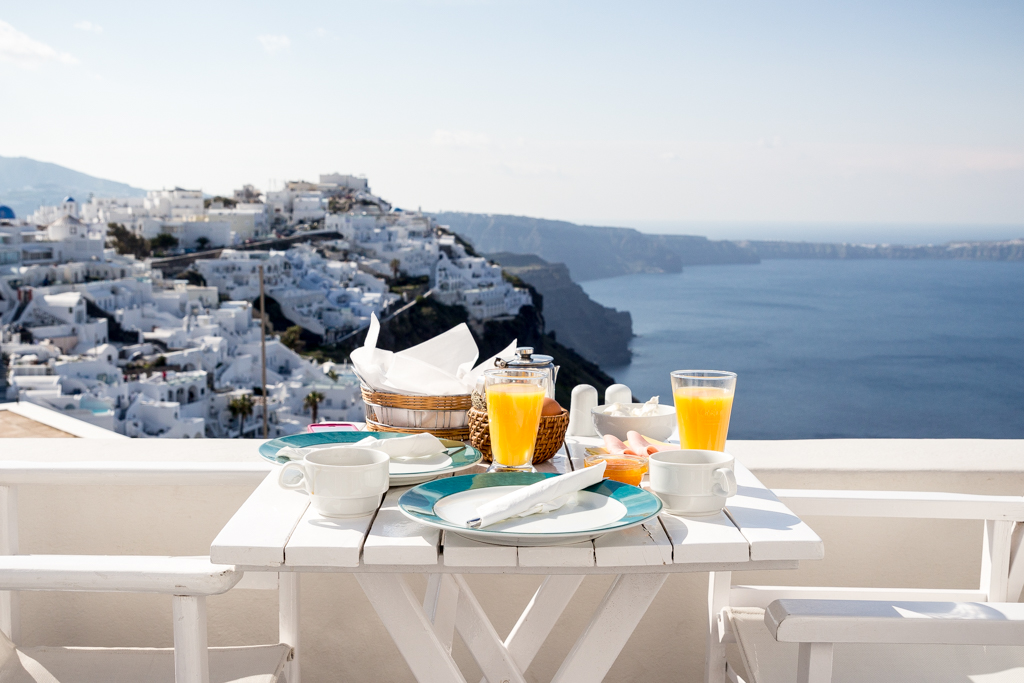This spring, I had the extreme pleasure of accompanying my sweet mother on her first trip overseas. Together, we narrowed our choices down to a few European countries, and in the end, she chose beautiful Greece.
But this wasn’t just an ordinary trip–we’d also be celebrating her birthday on March 12th.
We knew this would mean catching the tail end of low season in Greece (mid-October to mid-April), but we knew it would come with some positive trade-offs.
Our eight days were split between the capital of Athens and the volcanic island of Santorini–slow travel is always my priority and mom was 100% on board with that plan.
Naturally, we wound up having a spectacular time, even in spite of some less-than-ideal weather, but more on that later. Below are some of the biggest pros and cons of visiting Greece in low season to help you decide if it’s right for you.
Read more Greece posts:
- This is MY Athens: Not Your Average Walking Tour
- Mykonos, Paros, & Ios: The Best of the Cyclades Part I
- Santorini & Milos: The Best of the Cyclades Part II
- Tips for Traveling by Ferry in Greece
- 13 Delectable Greek Foods I’d Fly Back to Greece for in a Heartbeat
- The Wonders of Mainland Greece: Ancient Olympia
- The Wonders of Mainland Greece: The Monasteries of Meteora
Pros and Cons of Visiting Greece in Low Season
Visiting #Greece in low season? Here's what you can expect. #traveltips Click To TweetPro: Fewer tourists
The fact that fewer tourists frequent Greece in the low season was apparent in a number of different instances in both Athens and Santorini.
In Athens, for example, I had no trouble booking a great hotel room close to the Acropolis only a month or so before our departure. When booking Attalos Hotel, I chose a room with a balcony but otherwise wasn’t able to specify preferences.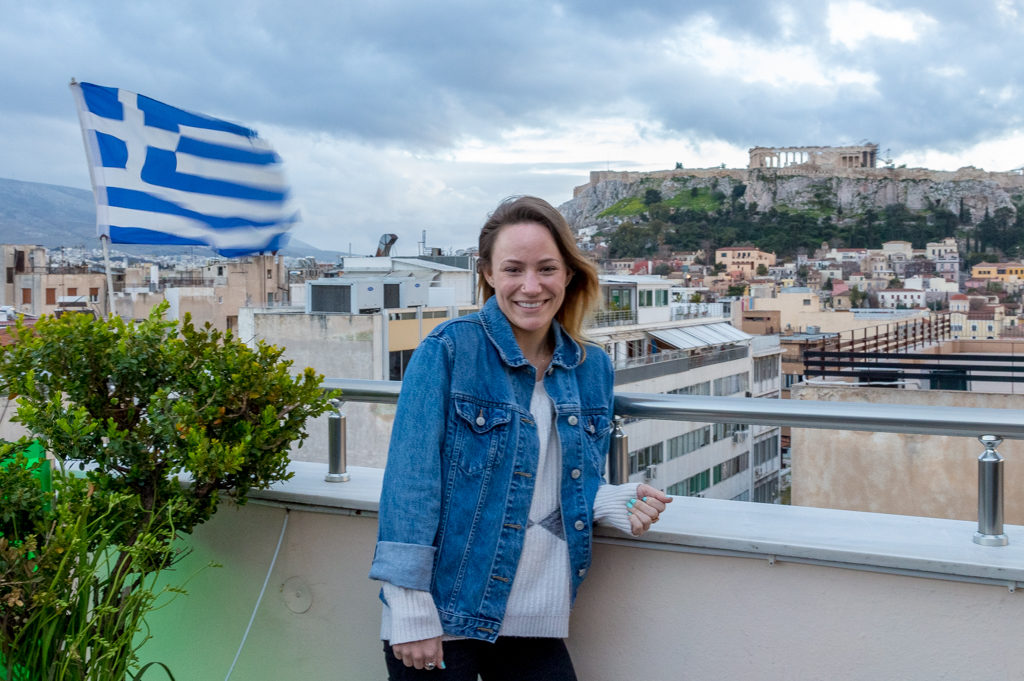
Upon arrival, we were pleased to find we’d been given a 9th-floor room (out of 10 total floors) with a stunning view of the Parthenon from our spacious private outdoor space. We were far enough from the street to avoid traffic noise and just one floor from the rooftop bar that was empty more often than not (pictured above).
At popular Athens attractions that would have been crawling with people during high season, we never had to fight for elbow room. We had excellent, unobstructed views of the changing of the guards at Syntagma Square, the walking streets of Monastiraki were never cramped, relieving any concern over pickpockets, and when visiting the Acropolis, tourist-free photo opportunities were ample.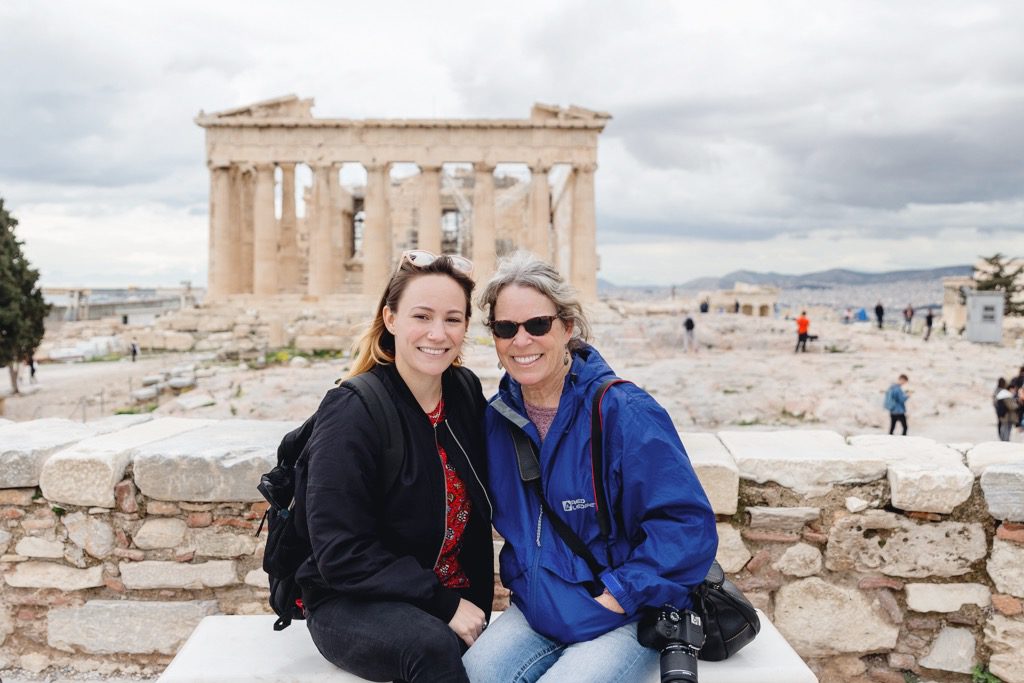
The story on Santorini was similar; we secured a gorgeous suite with a private balcony and caldera views at Blue Dolphins Apartments with little fanfare (a type of room that would have been extremely scarce, not to mention expensive, during high season).
Visiting even the most popular of places on the island, we encountered few other tourists, if any–at Red Beach, it was literally just the two of us, the beach, and the stormy sea. At the Koutsoyannopoulos Wine Museum, we waited exactly zero minutes to begin our tour, and the same amount of time to begin our tasting at the conclusion of our self-guided tour.
Waiting is not something you will do much of when you visit Greece in low season! Nor will you feel like a pain in the butt when you ask your server to take your photo because for once, he actually won’t have other things to do.
In Oia, what is arguably the most popular village on the whole island, we not only found parking just one block from the village center, but our lunch was served with a sizzling side dish of setting sun. Seats with a view are a luxury that would be damn near impossible to obtain during high season (without a few sacrifices, that is)–I could hardly believe we’d just waltzed into a restaurant and gotten the best seats in the house.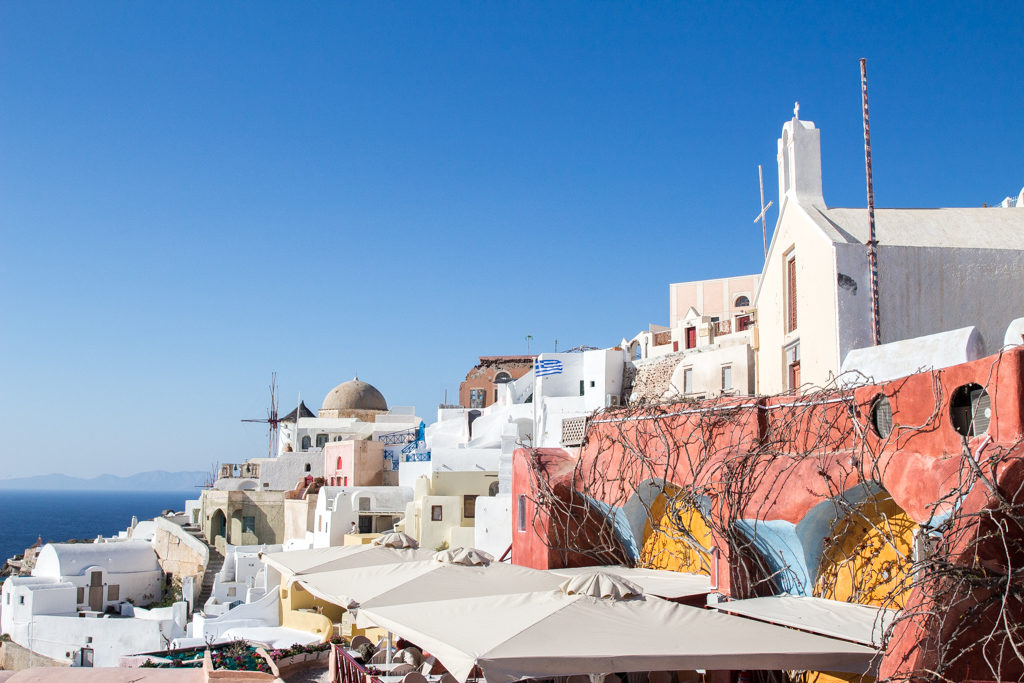
This story played out over and over again during the trip–we always had a choice of seats in restaurants and always received prompt, attentive service.
If avoiding crowds is important to you, visiting Greece in low season might just suit you perfectly.
Con: Many businesses are closed
Low season in Greece means many businesses are not going to be open; in the islands especially, many shops and restaurants operate ONLY between May and October and close up shop for the winter months.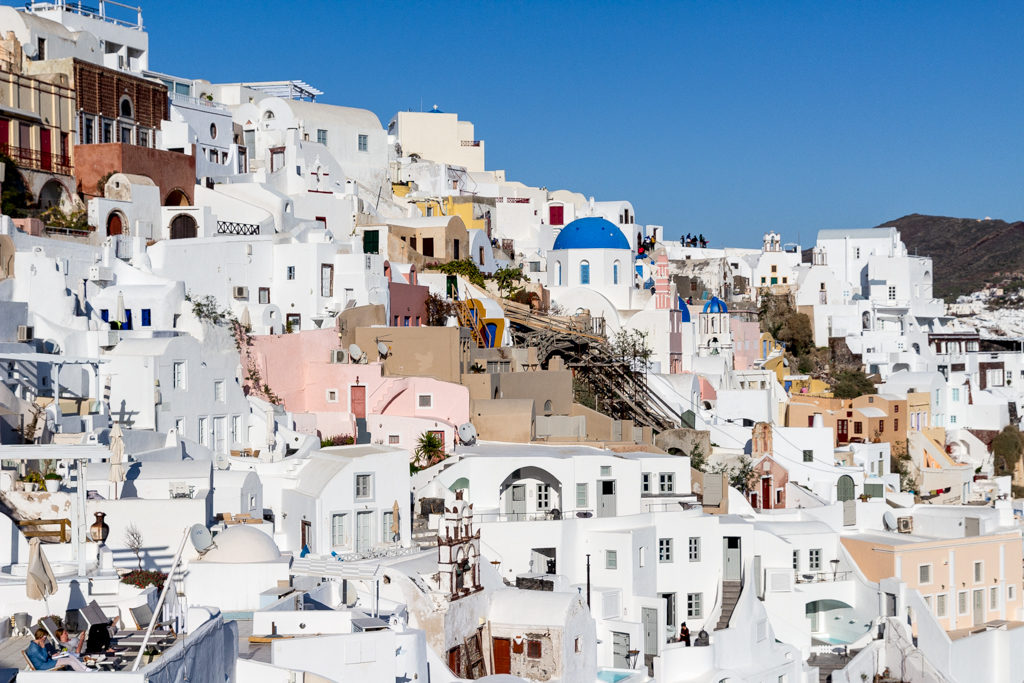
Truth be told, we didn’t really notice this in Athens. We were able to do and see everything we wanted to, and I’m sure this is due to the city being populated year-round.
On Santorini, our options were severely limited when it came to dining, shopping, and attractions. Many hotels are closed for the winter months as well.
March seemed to be the time of year when the island begins their intensive prep for the high season. Roads are being repaved, buildings are under construction, and roads and walkways are often filled with debris, whether from stormy weather or renovation projects.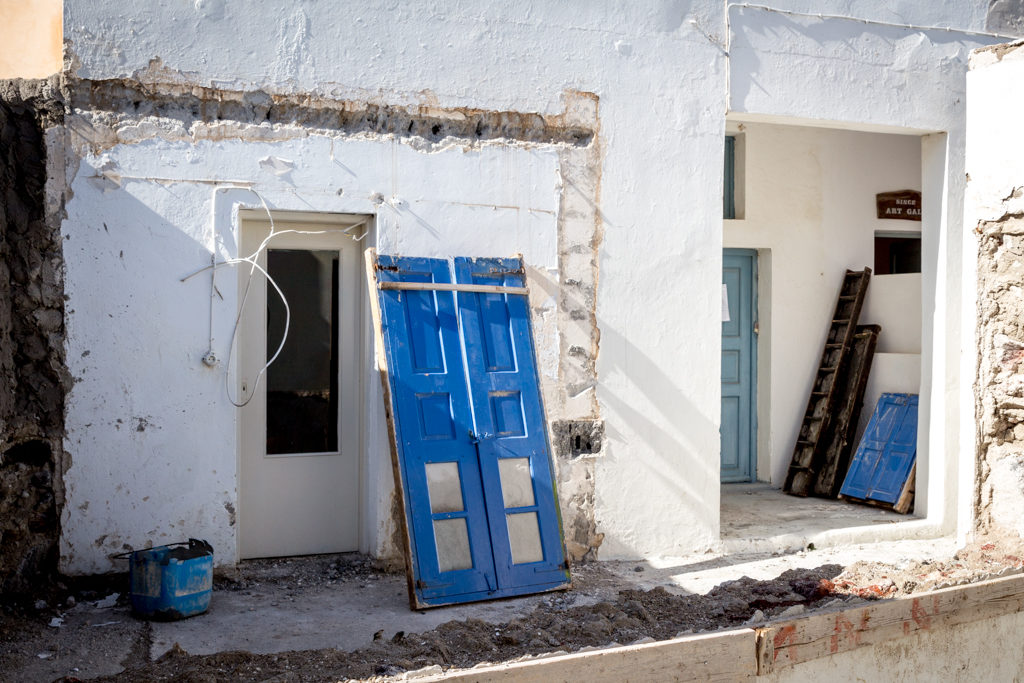
At times, this caused some problems. The night of my mom’s birthday, we hoped to find a restaurant nearby so we wouldn’t have to drive (and because it was far too cold to be outside for long). In our small village of Firostefani, after wandering for about 15 minutes, all we were able to find was an Italian restaurant that had (thankfully) just opened its doors for the season.
And our attempts at planning ahead didn’t make things any easier–when we asked locals if they knew what, if anything, was open around the island, very few could give us concrete answers which left us to figure it all out by trial and error.
During a sightseeing drive, we visited Perissa Beach only to find that every beachfront shop was shuttered closed and the only beachgoer was a lone dog burying his poop. To our disappointment, the Akrotiri Archeological Site was not open to visitors, either.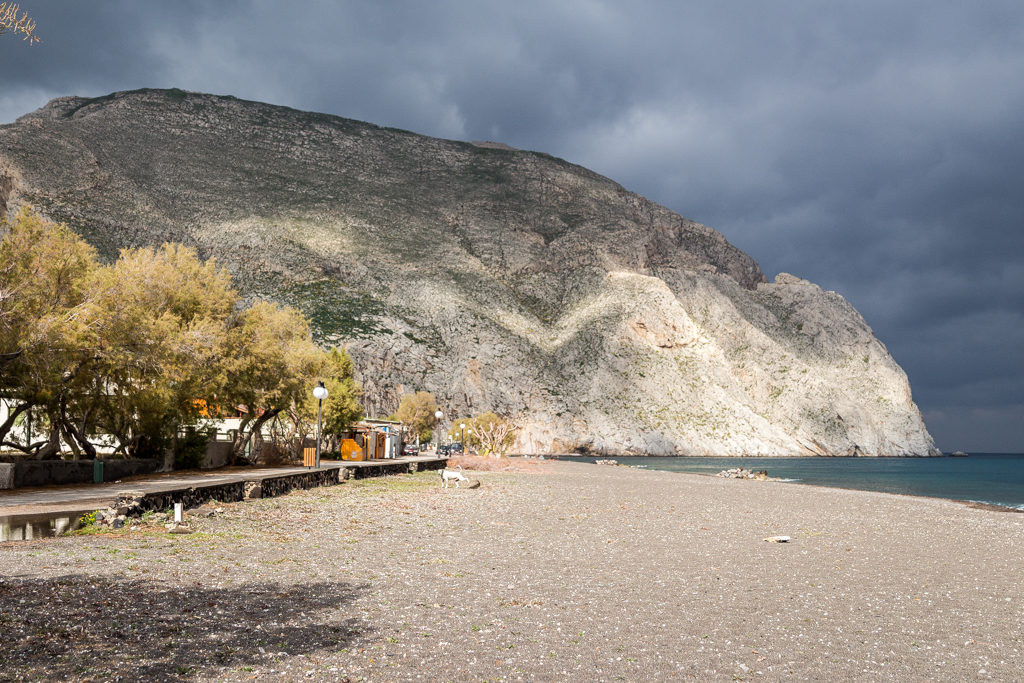
Overall, there was enough open on Santorini to keep us entertained and fed for a few days, but it certainly would have been nice to have more options.
If you want to ensure there are plenty of options for dining and entertainment during your trip to Greece, particularly in the islands, you’re better off waiting until late April or early May to visit (this is often referred to as shoulder season).
Pro: Lower prices
As to be expected, you’re likely to find much lower prices during the low season in Greece. This goes for everything from hotel rooms to attractions to food to transportation.
If you plan to travel the Greek islands by ferry, you will find inflated prices during the busy season. You can always save on ferry tickets by booking them a few months in advance.
If you plan to fly (Santorini has its own airport), you can save on flights by booking well ahead of time, too. Flights are generally going to be more expensive than ferries, but the amount of time saved by flying is significant.
As mentioned above, we definitely saved money on accommodation by traveling Greece in low season–prices can go up as much as 50% in the high season, and those rooms with amazing views? Well, expect to pay an arm and a leg for those babies or be relegated to the viewless chambers of less-than-glamorous budget hotels.
Of course, hostels are a good way to save money on accommodation no matter the season. Caveland in Santorini is absolutely dreamy!
Con: Cold and wet weather
We’d done our research on weather, so going into this trip we knew we’d encounter some rain. What we were pleased to find was that while it rained the majority of days we were there, it never once rained for the entire day. Sun breaks were common, and sometimes it simply remained overcast without getting us wet.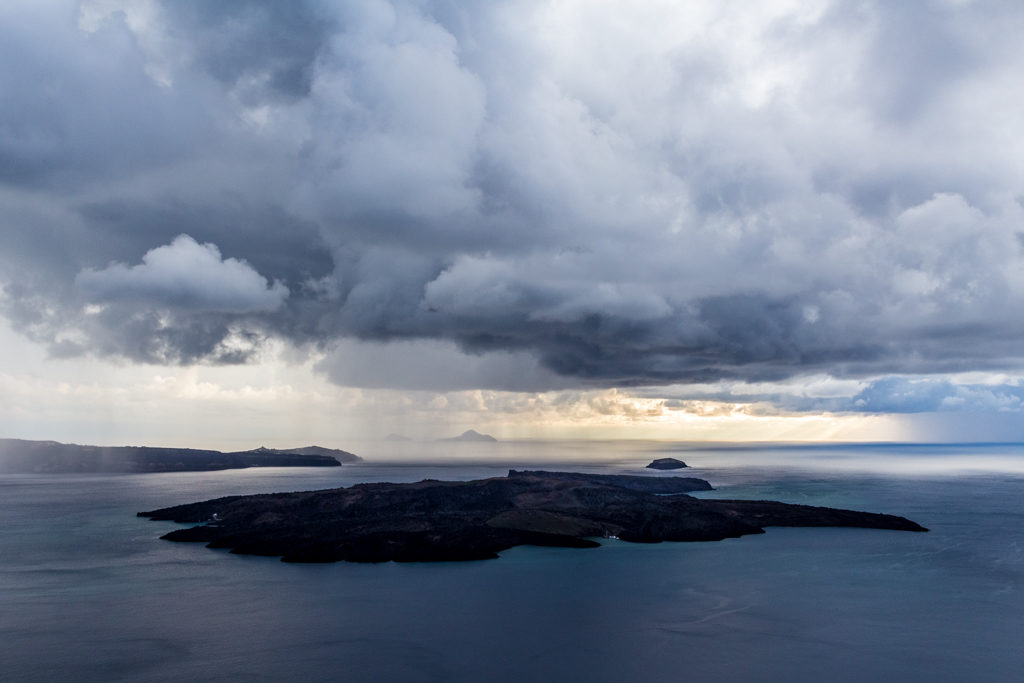
However, it’s worth keeping in mind that low season in Greece will be pretty darn chilly, often rainy, and sometimes extremely windy.
December is commonly the wettest month of the year, and January is the coldest. March is the month when the rainfall starts to ease up; as I mentioned, we definitely got rained on, but it never really impeded our activities.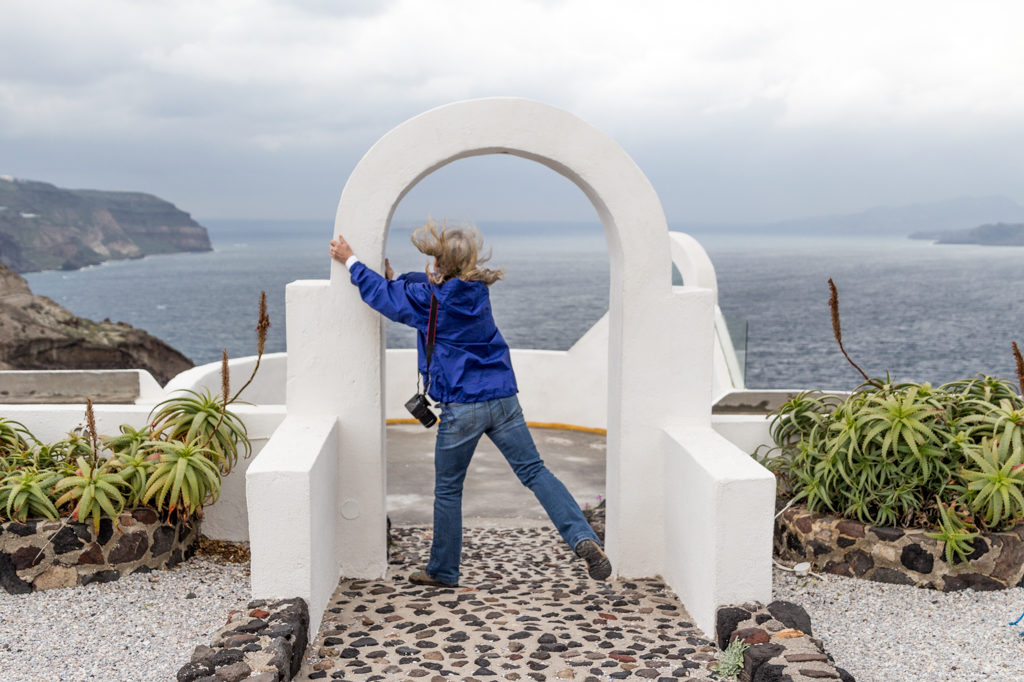
If you plan to travel Greece in the low season, be prepared with cold weather clothing and gear to protect you from rain and wind.
Pro: Lots of greenery
An unexpected positive to arise from the rainy season was an abundance of greenery everywhere we went.
Atop the Acropolis, an area that is typically rocky, barren and dry, the ground was instead blanketed with green and yellow. In fact, flowers bloomed all over the city in the parks and plazas.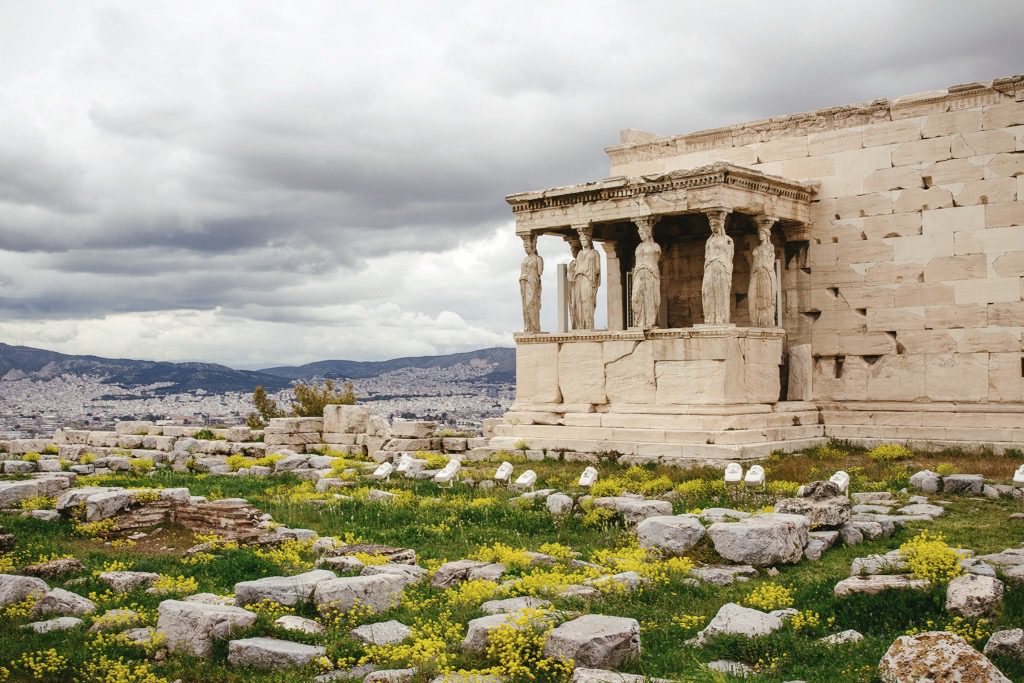
Santorini, a volcanic island known for its extremely dry climate and challenging conditions for growing plants, was similarly blanketed with beautiful green shrubbery and bright yellow flowers.
Locals admitted they had never seen Santorini looking so verdant (and that they were coming off of an unusually wet winter). We couldn’t help but fall in love with the sweet plants that had taken over the island and secretly reveled in the fact that we were fortunate enough to be there at just the right time to see this rare event.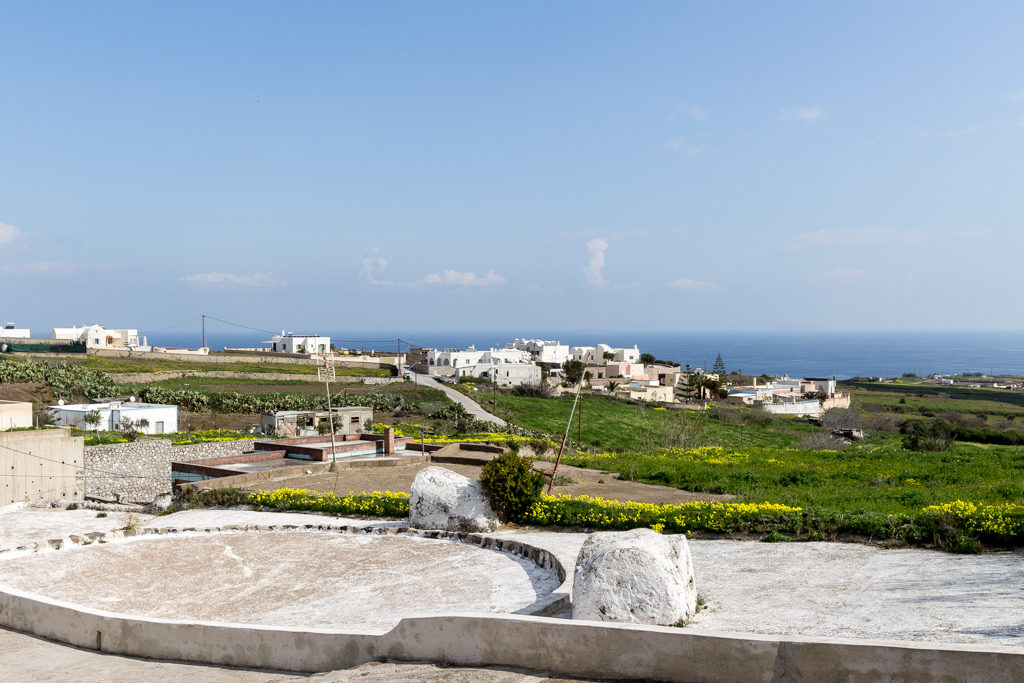
Okay, okay, so there’s ONE major plant-related downside to traveling at this time of year: The beautiful bougainvillea that normally drapes over walkways and creates bursts of vibrant color against the white backdrop of Greek buildings…are not in bloom. Womp womp.
Otherwise, if you want to see Greece greener than you’ve ever seen it, low season is the time to do it!
Would you ever consider visiting Greece in low season? Do you think the pros outweigh the cons?